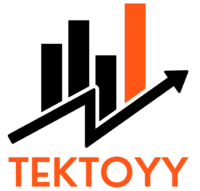When you need to finance a significant expense—be it consolidating high-interest credit card debt, funding a home renovation, or covering an unexpected medical bill—a personal loan can be a flexible and effective solution. It offers a lump sum of cash with a fixed interest rate and predictable monthly payments. But the single most common question borrowers have is: “How much can I actually get?”
The answer isn’t a simple number. Personal loan amounts can range from as little as $1,000 to as much as $100,000. The amount a lender is willing to offer you is not arbitrary; it’s the result of a detailed risk assessment. They are essentially trying to predict your ability to pay them back. This guide will walk you through exactly what lenders are looking at, how their decisions are made, and what you can do to maximize the amount you’re eligible to borrow.
The Core Factors That Determine Your Loan Amount

Lenders look at a combination of factors to build a comprehensive picture of your financial health. Understanding these key elements is the first step to understanding your borrowing potential.
Your Credit Score: The Cornerstone of a Lender’s Decision
Your three-digit credit score is the most influential factor in any lending decision. It’s a numerical representation of your history and reliability as a borrower. Lenders use it as a quick gauge of the risk they’re taking by lending you money.
- Excellent Credit (720-850): If you fall in this range, you’re considered a prime borrower. You’ve demonstrated a consistent history of on-time payments and responsible credit management. Lenders will be competing for your business, offering you their highest loan amounts and their lowest, most attractive interest rates.
- Good Credit (690-719): Borrowers with good credit are still very likely to be approved for a substantial loan amount. While you may not be offered the absolute rock-bottom interest rate, you will have plenty of competitive options.
- Fair Credit (630-689): In this range, lenders start to become more cautious. You may still qualify for a personal loan, but the amount offered will likely be lower, and the interest rate will be higher to compensate the lender for the perceived increase in risk.
- Poor Credit (Below 630): Qualifying for a traditional personal loan with poor credit is challenging. If you are approved, expect a much lower loan amount and a significantly higher interest rate.
Debt-to-Income (DTI) Ratio: Your Capacity for New Debt
Your Debt-to-Income (DTI) ratio is a critical metric that lenders use to assess your ability to manage your monthly payments. It’s calculated by dividing your total monthly debt payments by your gross monthly income.
Formula: DTI = (Total Monthly Debt Payments / Gross Monthly Income) x 100
This ratio tells a lender what percentage of your income is already spoken for by existing debts (mortgage/rent, car loans, student loans, credit card minimums, etc.).
- DTI Below 36%: This is the sweet spot. A low DTI signals to lenders that you have plenty of room in your budget to comfortably handle a new loan payment. You are far more likely to be approved for a larger loan amount.
- DTI Between 37% and 43%: You can still get approved, but lenders may be more conservative with the loan amount they offer.
- DTI Above 43%: This is a major red flag for most lenders. A high DTI suggests you may be overextended financially, making it risky to add another payment to your obligations. You’re likely to be denied or offered a very small loan.
Income and Employment Stability: Proving Your Ability to Repay
A great credit score and a low DTI won’t matter if you don’t have a reliable source of income to make the loan payments. Lenders need to see not only that you make enough money, but that your income is stable and likely to continue.
- For Salaried/W-2 Employees: This is the most straightforward scenario for lenders. They will typically ask for your most recent pay stubs, W-2s from the last two years, and may even call your employer to verify that you are currently employed.
- For Self-Employed Individuals/Freelancers: If you work for yourself, you’ll need to provide more extensive documentation to prove your income is stable. Be prepared to submit:
- The last two years of your personal and business tax returns.
- 1099 forms.
- Recent bank statements to show consistent cash flow.
Lenders want to see a track record of steady or growing income over at least two years to feel confident in your ability to repay the loan.
The Lender’s Perspective: A Look at Different Institution Types

Where you apply for your loan also plays a role in how much you might be offered. Banks, credit unions, and online lenders have different business models and risk tolerances.
Traditional Banks (e.g., Chase, Bank of America, Wells Fargo)
- Strengths: If you have an established relationship and a strong credit profile, banks can offer competitive rates and high loan amounts (often up to $50,000 or more).
- Underwriting Process: Banks tend to have a more conservative and traditional underwriting process. They often place a heavy emphasis on your credit score and may have stricter DTI requirements. The application and funding process can also be slower than other options.
Credit Unions (e.g., Navy Federal, PenFed)
- Strengths: As member-owned, non-profit institutions, credit unions are often more focused on serving their members than maximizing profits. This can translate into lower interest rates, more flexible terms, and a greater willingness to consider the whole picture of your financial life, not just your credit score.
- Underwriting Process: While they still have rigorous standards, credit unions may be more forgiving of a slightly lower credit score if you have a long history as a member in good standing. Their loan amounts are competitive with banks.
Online Lenders (e.g., SoFi, LightStream, Upstart)
- Strengths: Online lenders are known for their speed and convenience. Their application processes are streamlined, and funding can happen in as little as 24 hours. They are often more accessible to borrowers with fair credit. Some online lenders specialize in large loans, with maximums reaching $100,000.
- Underwriting Process: Many online lenders use sophisticated algorithms that can analyze thousands of data points beyond just your credit score, including your education and career history. This can sometimes result in better approvals for non-traditional applicants.
The Application Process: From Inquiry to Approval
Navigating the application process strategically can help you understand your borrowing power without negatively impacting your credit.
Step 1: Pre-Qualification (The Soft Inquiry)
This is your most valuable tool for shopping around. When you pre-qualify for a loan, a lender gives you a preliminary estimate of the loan amount, interest rate, and term you might receive based on basic financial information you provide.
Crucially, this is done with a soft credit check, which does not affect your credit score. You can and should pre-qualify with multiple lenders (banks, credit unions, and online platforms) to see who offers you the best terms and the highest loan amount.
Step 2: The Formal Application and Pre-Approval (The Hard Inquiry)
Once you’ve compared pre-qualification offers and chosen the best one, you’ll submit a formal application. This is a more in-depth process where you’ll provide the detailed documentation we discussed earlier (pay stubs, tax returns, etc.).
This step will trigger a hard credit inquiry, which can cause a small, temporary dip in your credit score. This is why you should only formally apply with one lender once you’re confident in your choice. If your application is fully verified and meets the lender’s criteria, you’ll receive a pre-approval, which is a firm offer.
Other Factors That Can Influence Your Loan Amount

While credit, DTI, and income are the “big three,” a few other elements can sway a lender’s decision.
The Stated Purpose of the Loan
Why you need the money matters to some lenders. Using a loan for a purpose they deem “responsible,” like debt consolidation or a value-adding home improvement project, might be viewed more favorably than using it for a vacation or speculative investments. Some lenders, like LightStream, may even offer different rate structures and higher loan limits based on the loan’s purpose.
Your Chosen Loan Term
The loan term is the length of time you have to repay the loan (e.g., 36, 60, or 84 months). A longer term results in lower monthly payments, which can sometimes make it easier for you to qualify for a larger loan amount because the monthly payment is more manageable relative to your income. However, remember that a longer term also means you’ll pay significantly more in total interest over the life of the loan.
Strategies to Qualify for a Larger Personal Loan
If you’ve pre-qualified and the offered amounts aren’t meeting your needs, don’t despair. There are proactive steps you can take to improve your borrowing profile.
- Improve Your Credit Score: This is the most impactful strategy. Focus on making 100% of your payments on time and paying down your credit card balances to lower your credit utilization ratio.
- Pay Down Existing Debt: Reducing your existing debt before you apply will directly lower your DTI ratio, instantly making you a more attractive candidate for a larger loan.
- Increase Your Income: If possible, documenting additional income from a side hustle, freelance work, or a recent raise can significantly boost your borrowing power.
- Consider a Co-signer or Co-borrower: Applying with someone who has a strong credit score and stable income can dramatically increase the amount you’re offered. Be aware that this is a serious commitment, as that person becomes equally responsible for repaying the debt.
- Check for and Dispute Credit Report Errors: Obtain a free copy of your credit report from all three bureaus. If you find any inaccuracies, dispute them immediately. Removing a negative error could provide a quick boost to your score.
The Bottom Line: Borrow What You Need, Not Just What You Can Get

Ultimately, the amount you can borrow is a complex calculation based on your perceived ability to repay. By understanding the key factors lenders use, you can assess your own financial standing and take steps to put yourself in the strongest possible position. Pre-qualify with multiple lenders to see what you’re offered, and remember the golden rule of borrowing: just because you can get approved for a certain amount doesn’t mean you should take it all. A smart borrower takes only what they truly need and ensures the monthly payment fits comfortably within their budget.







